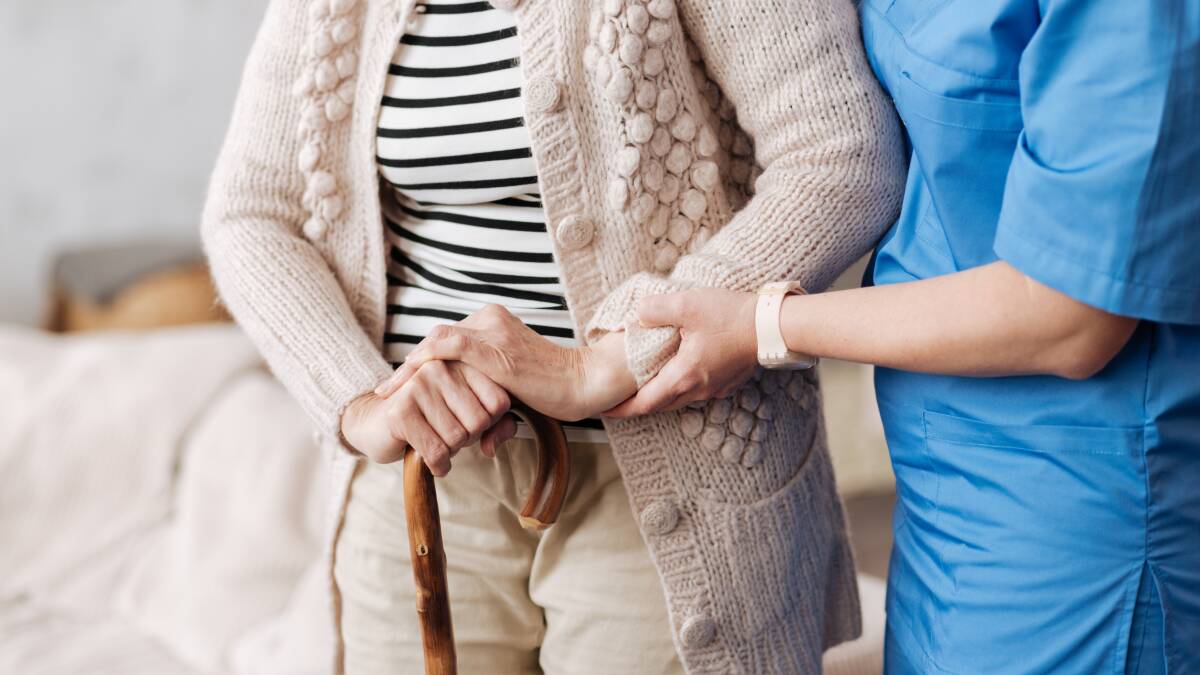
Sally was an energetic and engaged pensioner when she was first diagnosed with post-polio syndrome two years ago. Having overcome the disease nearly 70 years earlier, it was a shock to accept the loss of mobility and independence that soon accompanied the condition.
Subscribe now for unlimited access.
or signup to continue reading
The frustrations of needing support to keep her home to a standard expected by a former nurse of 45 years' standing were particularly hard to accept. But changing bed linen, cleaning the bathroom and other heavy housekeeping tasks were out of the question, and Sally soon came to realise she was one of the lucky ones, in receipt of enough funding to support her needs week by week.
Like many older Australians, though, Sally is now wondering what COVID-19 will mean for her. On top of the fear that comes with her increased vulnerability to serious outcomes from the virus, Sally's reliance on outside support from care workers means she has little control over self-isolation. With her regular care worker overseas when the virus hit, and now in quarantine, Sally has had to get used to a steady stream of the casual and part-time workers that typify the home care sector.
Often low-skilled and low-waged, aged care is a precarious occupation at the best of times. Many home care workers operate without the security of a permanent contract, meaning they won't have paid sick leave should they fall ill, making the need to continue working out of financial necessity a frightening reality, for both workers and the older people who depend on their support.
The precarity of the aged care workforce exists within a service system already in crisis. It is a system characterised by inconsistency of service, high costs, and a sense of families "going to war" with providers. That it does not provide what older people want from aged care - that is, relationships of care - may prove the least of our worries in the current context of pandemic threat.
READ MORE:
Last week, Prime Minister Scott Morrison introduced protections for residents living in aged care facilities. But he neglected to mention the many older people and Australians living with disability who rely on regular home care support.
The current risk-mitigation strategy for home care workers and their patients rests on a 30-minute online training program from the Department of Health. This mandatory COVID-19 training "covers the fundamentals of infection prevention and control" that we are seeing in public health updates around handwashing and hygiene.
The Department also urges "routine environmental cleaning", which makes sense in the context of residential care facilities, but not for home care settings, in which workers enter private homes to undertake only those personal care tasks for which they have been contracted, and within strict time limits.
Already, well-documented gaps in the aged care workforce in regional Australia may result in particularly devastating outcomes for care-dependent Australians living in rural areas, like Sally.
More likely to have lower incomes, greater levels of disability and to live in poorer quality housing, older people in rural Australia have "worse health outcomes and greater need for aged care support".
The risks of serious infection or death from COVID-19 for both home care workers and their vulnerable patients are obvious, yet the silence of the government is palpable. It suggests that taking measures to protect workers and patients in the home aged care system may fall into the "too-hard basket", alongside disability home care - at least until that risk becomes reality.
Certainly, providing adequate support for the home care sector presents particular challenges in the face of this pandemic. Despite the system falling under the same regulatory framework as residential services, the fragmented nature of the sector makes it difficult to design an effective solution. With the choice of service providers including individual workers on gig platforms, large multinational for-profit companies, non-government operators and some local councils, each provider will have different support needs depending on their business model and scale of operation.
Of course, not so long ago, councils were the sole providers of home and community care. This meant they held detailed and up-to-date information about vulnerable populations. The system had more regulated workforce structures in place, with contracted hours and standardised training.
The shift to a market model of home aged care may have at least nominally conferred more choice and control for consumers, but it has also seen that comprehensive and recorded knowledge of vulnerable people lost from the system.
Despite these real risks to home care recipients, arguably they are the lucky ones. Those most in need of high-level support routinely wait more than 12 months for a package, a funding deficit that saw more than 16,000 older Australians "die waiting" in 2018 alone. For those currently on the waiting list, delays will only be prolonged if the workforce comes under increased pressure from a viral pandemic.
As COVID-19 spreads throughout our country, the human costs of Australia's privatisation of care are now staring us in the face. Only an urgent intervention by government can ensure the best possible care is given to our most vulnerable loved ones in the face of this unprecedented health crisis.
- Myfan Jordan is the social innovation director at independent think tank Per Capita.
- For information on COVID-19, please go to the federal Health Department's website.
- You can also call the Coronavirus Health Information Line on 1800 020 080
- If you have serious symptoms, such as difficulty breathing, call Triple Zero (000)
Our COVID-19 news articles relating to public health and safety are free for anyone to access. However, we depend on subscription revenue to support our journalism. If you are able, please subscribe here. If you are already a subscriber, thank you for your support. If you're looking to stay up to date on COVID-19, you can also sign up for our twice-daily digest here.

